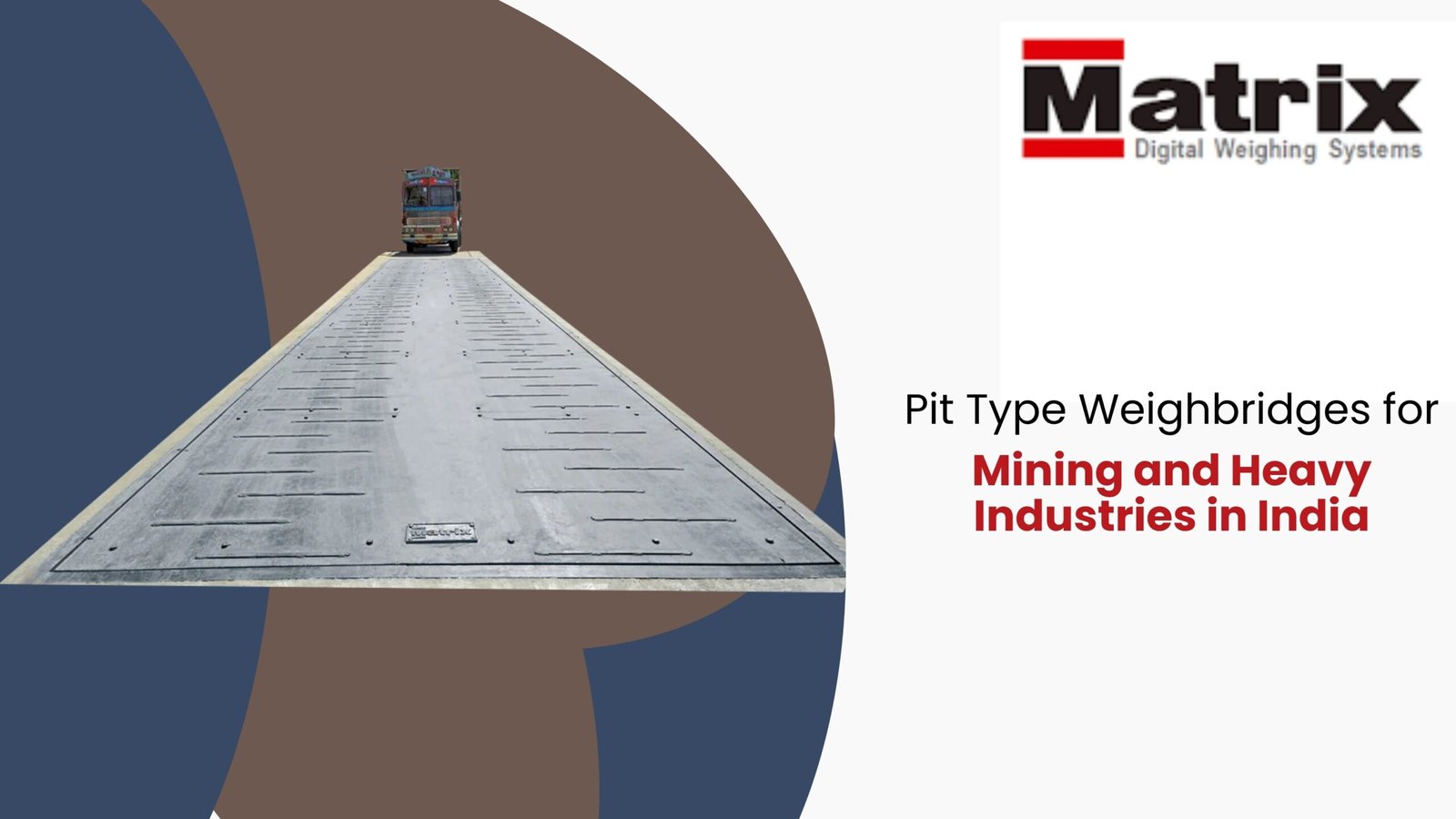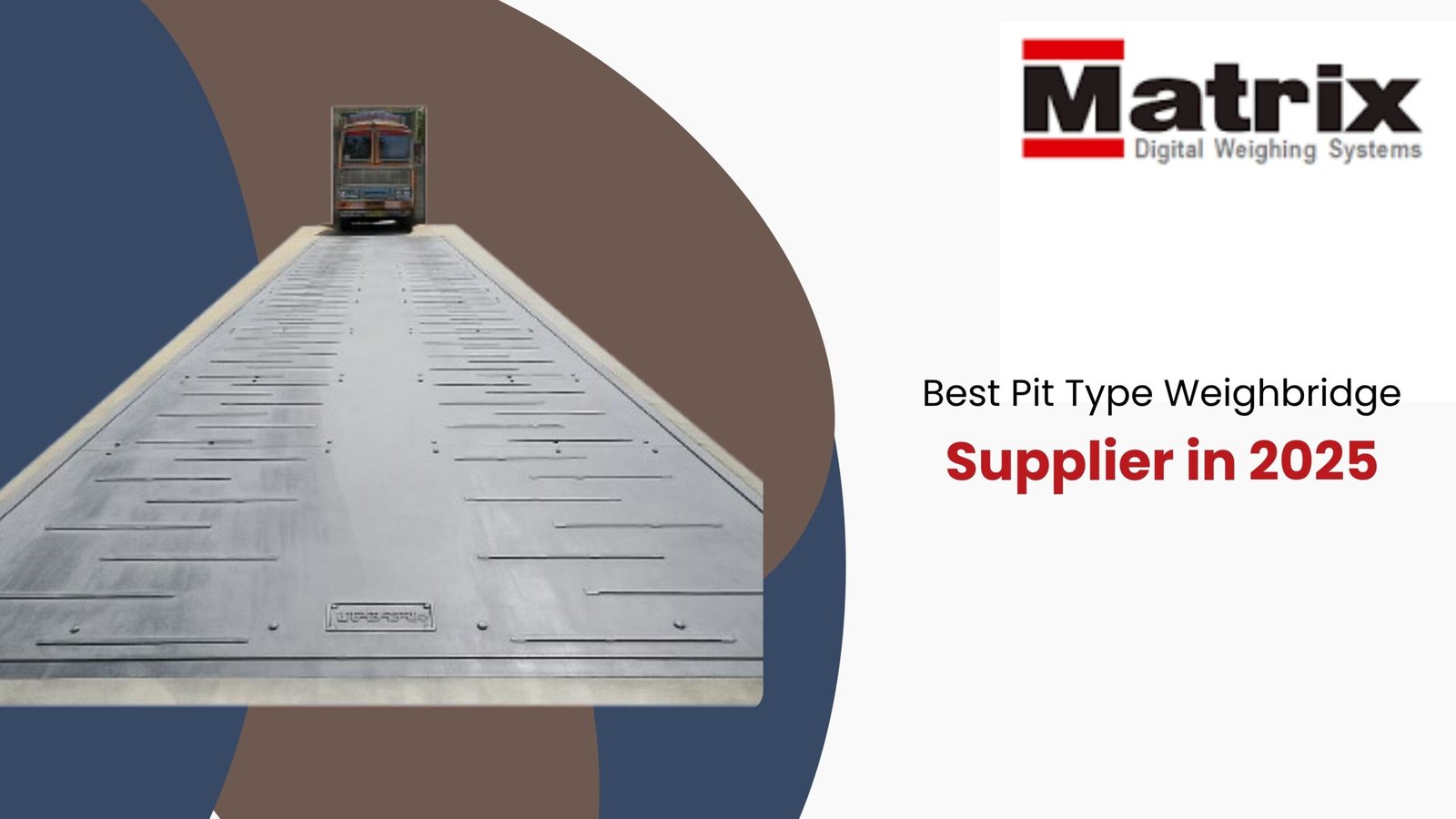Pit Type Weighbridges for Mining and Heavy Industries in India

Introduction
Heavy yards run on predictability. You need a scale that handles high traffic, tight space, and harsh weather without slowing the line. Pit-type weighbridges were built for that reality. With a ground-level deck and all-direction approach, they keep queues short and layouts flexible—especially in dense plants and busy mine gates.
This advertorial gives you a clear, India-first view of pit-type systems. We start with a quick refresher, outline the core advantages, and show where they fit across mining and heavy industry. Then we cover civil work, step-by-step installation, ongoing upkeep, and the decision checks that protect uptime in the monsoon. By the end, you’ll know when a pit-type design is worth the dig, and how to plan one that runs clean, safe, and compliant.
What is a pit-type weighbridge?
A pit-type weighbridge places the deck flush with ground level inside a reinforced pit. Trucks approach from any side, roll on at grade, and exit without ramps. The layout saves horizontal space, improves traffic geometry, and suits yards that can’t spare long approaches. The trade-off is deeper civil work: excavation, waterproofing, and a reliable drainage plan.
Plain advantages
- Ground-level access with no long ramps
- All-direction vehicle approach in tight yards
- Clean sight lines for marshals and cameras
- Familiar driving experience for operators and contractors
Core advantages
Pit-type is chosen when footprint and flow beat everything else.
- Space efficiency: No ramp lengths to squeeze in. You can site the deck close to buildings, conveyors, or stockpiles.
- High-throughput flow: Approach from multiple directions. Merge and split queues without awkward U-turns.
- Permanent geometry: Once built, the deck integrates neatly with gatehouses, boom barriers, and weigh cabins.
- Driver comfort: No approach gradient. Safer for high-GVW trucks, low-clearance trailers, and night operations.
Applications in heavy industry
Pit-type designs excel where traffic is dense and the yard is busy all day.
Mining
- ROM and plant gates: Control inbound ore and outbound dispatch with short queues and fast turns.
- Blending and reconciliations: Weigh before and after processing; maintain audit trails across shifts.
- Harsh-duty vehicles: Handle high axle loads with stable, level access that reduces driver error.
Logistics and freight
- Gatehouse control: Weigh at grade as part of security, ANPR, and ticketing.
- Congested yards: Keep trailer trains moving with side-entry and quick exit lanes.
- Shift peaks: Smooth truck waves after ship berths or train placements.
Construction, quarries, and plants
- Permanent yards: Long-term projects and fixed plants where relocation isn’t the plan.
- Tight footprints: Brownfield sites with buildings, pipes, or conveyors nearby.
- Continuous duty: Cement, steel, aggregates—anywhere the line never really sleeps.
Site and civil requirements
Get the ground right and the scale will pay for itself.
- Excavation and walls: Reinforced pit walls sized for soil class and groundwater. Protect against caving and settlement.
- Waterproofing and drainage: Layered waterproofing, graded channels, silt traps, and a sump with pump redundancy.
- Slab levels: Precision levels under the deck and at surrounds to prevent water pooling and misalignment.
- Safe access: Fixed ladders, non-slip steps, lighting, and gas-aware confined-space procedures.
- Utilities map: Identify cables and pipelines before you dig. Plan diversions once, not mid-project.
Installation process
A clean, sequenced install shortens commissioning and protects accuracy.
1) Survey and design
- Survey the yard, traffic flows, and geotechnical conditions.
- Freeze the deck location, pit size, drainage route, and cabin integration.
2) Excavation and RCC
- Excavate with shoring as needed.
- Cast pit walls, floor slab, and cable trenches to drawings. Cure fully.
3) Waterproofing and drainage
- Apply membrane and coatings, then place drains, strainers, and silt traps.
- Install dual pumps on separate circuits with manual bypass.
4) Deck placement and alignment
- Lower modules, align end-stops, and set mechanical clearances.
- Route cables through protected conduits and junction boxes.
5) Commissioning and calibration
- Level checks, zero checks, and multi-point calibration with certified test weights.
- Integrate indicators, printers, cameras, and software as per SOP.
Maintenance and safety
Pit-type requires discipline. Build routines; avoid surprises.
- Debris control: Schedule pit cleaning to remove silt, stones, and spillage. Keep strainers clear.
- Pump reliability: Test pumps weekly in monsoon months. Keep a spare on site.
- Visual inspections: Check end-stops, anchor bolts, load-cell cables, and protective conduits.
- Calibration cadence: Set a calendar based on duty cycle, regulation, and internal QA. Re-check after civil repairs.
- Confined-space safety: Use gas checks, tag-in/tag-out, and proper lighting before entry.
Decision cues and constraints
Choose pit-type when the yard demands space savings and high throughput.
Choose pit-type if:
- Yard space is tight and ramps won’t fit
- Traffic is heavy, multi-direction, and continuous
- The site is permanent with long planning horizons
- You need an integrated gatehouse-at-grade experience
Plan for these constraints:
- Higher civil scope: Excavation, waterproofing, and structural RCC raise upfront work.
- Water risks: Without strong drainage, pits collect water and silt—design for the monsoon, not summer.
- Maintenance access: Work happens inside the pit. Enforce safety, lighting, and cleanliness.
FAQs
Q: Is a pit-type accurate in harsh, outdoor sites?
A: Yes. Accuracy depends on load cells, alignment, slab level, and calibration. Protect cables, keep the pit clean, and follow the calibration plan.
Q: How do we avoid flooding in monsoon?
A: Oversize drains and sumps. Add silt traps upstream. Use pump redundancy and test weekly. Keep a clear runoff path away from the deck.
Q: What slows busy yards the most?
A: Bottlenecks at approach and exit. Design side-entry and multi-lane merges. Keep ticketing fast with integrated ANPR and pre-printed tokens.
Q: How long does civil work take?
A: Timelines vary by soil, depth, and approvals. The safest plan is to finish RCC and waterproofing before peak rain, then place the deck and commission.
Conclusion
Pit-type weighbridges earn their keep where space is scarce and trucks never stop. The ground-level deck keeps flows tidy. The all-direction approach shortens queues. With robust drainage and disciplined upkeep, the system delivers clean weights through peak monsoon and peak shift alike. If your yard is permanent, constrained, and traffic-heavy, pit-type is the practical answer. Start with a site survey, freeze drainage, and design for the worst weather week—not the best.
Matrix Weighing Systems — Built for Heavy Industry
We design, install, and service pit-type weighbridges for mines, plants, and high-throughput yards across India. Our team delivers RCC and pit drawings, drainage plans, and clean integrations with indicators, printers, and software. We focus on accurate readings, reliable uptime, and fast field support—so your line keeps moving.
Call to action: Book a 20-minute site-readiness consult. Get a pit-type layout and a costed civil plan tailored to your space, traffic, and compliance needs.

